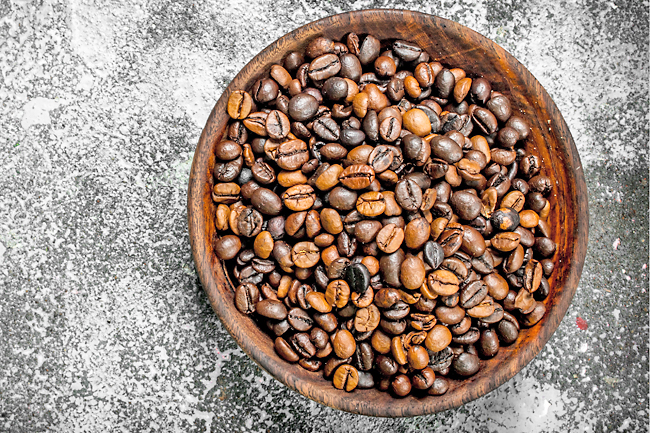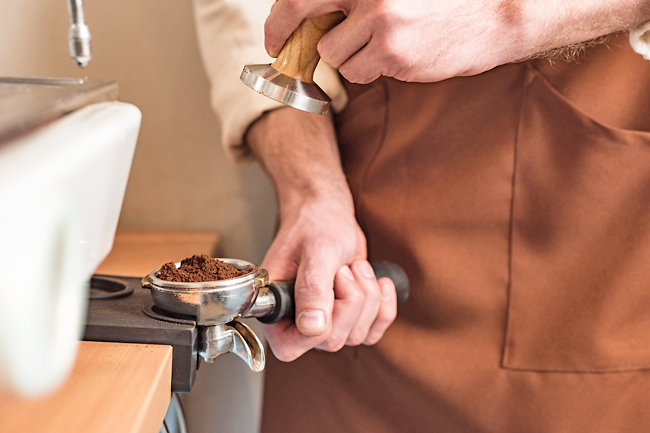THE WASHINGTON POST – Grinding coffee is a messy business. Static electricity builds up on the grounds, leaving a clingy mess stuck in the grinder.
Now, a team of chemists and volcanologists at the University of Oregon have unraveled precisely how moisture affects the buildup of static – and they’ve come up with a simple solution.
According to the researchers, adding a spritz of water to the beans before grinding cuts static. It also happens to create a more consistent, stronger-tasting shot of espresso.
The new study, published in the journal Matter, might not shock avid coffee geeks, who have honed their techniques through years of intuition, experience and tips traded in online forums.
Some baristas, for example, already use a wet teaspoon to stir coffee beans or spray a squirt of water on beans to reduce static, a practice known as the “Ross Droplet Technique” or RDT. But the new paper shows systematically how moisture in coffee beans affects the build up of charge and how it can be manipulated.
“The idea you get some type of electrical buildup in coffee grounds is a pretty old observation. If you’ve never seen an industrial scale roastery, you can see coffee grounds flying up and sticking all over the place,” said founding director of the Coffee Center at the University of California at Davis William Ristenpart.



“What’s cool about this paper is it’s putting some hard science, some hard data, behind understanding the mechanism.”
The paper also sheds more light on the burgeoning field of coffee science, which draws together experts from across seemingly incongruous disciplines to conduct dozens of drinkable experiments and probe the fundamental science behind a cup of joe.
Case in point: The new study was a partnership between scientists interested in coffee grinding and volcanologists fascinated by the lightning storms generated during eruptions.
These scientists don’t just work in different labs – they basically inhabit different scientific universes, publishing in specialised journals and going to separate conferences.
But over a cup of coffee, the two teams realised that they were studying the same core phenomenon. Whether it is a burr grinder smashing up beans or an explosive eruption pulverising rock into ash, friction and fractures result in tiny particles that accumulate electric charge in the process.
While many of the details of their investigation are abstruse to the casual coffee drinker, their paper contains simple, actionable results for a person trying to keep a tidier kitchen or a barista trying to create an efficient and more intense shot of espresso.
“If you’re going to be grinding whole-bean coffee, adding a small amount of water to those whole beans before you grind them will result in the coffee being more accessible when you brew it,” said coffee chemist at the University of Oregon and one of the leaders of the study Christopher Hendon.
In other words, using this method, “you get more coffee out of your coffee”.
DISCOVERING COMMON GROUND
The collaboration began at Hendon’s coffee lab at the University of Oregon, which hosts regular coffee hours.
Josh Méndez Harper, then a postdoctoral researcher in a volcanology lab, started attending as a casual coffee drinker – the kind of person who would gulp down whatever he was handed without a second thought. But over time, he became a regular and started to geek out on coffee.
One day, he overheard Hendon and others debating how electricity builds up during grinding.
“I said, ‘Oh! That’s what I spend the last five years doing, but in a different context,’” Méndez Harper recalled. To study how charge builds up on volcanic ash, volcanologists sometimes use a device called a Faraday cup. Despite the name, it has nothing to do with drinking – it’s a conducting metal cup, and scientists can use it to measure the charge on individual particles, then calculate the density of that charge by weighing them.
The scientists decided to collaborate. Using a simple, custom-built Faraday cup that had been machined to fit the chute of their coffee grinder, they set out to see if they could make similar measurements of coffee grounds.
In experiments that ranged from grinding commercially produced coffee to roasting their own beans to different levels, the team found that moisture modulated the amount of charge on coffee grounds. Lighter roast coffees that have more internal moisture gained less static charge during grinding and tended to charge positively. Darker roasts, which are drier, gained more charge and tended to accumulate negative charge.
The scientists were intrigued that coffee sometimes charged in one direction, and sometimes in the other, and that internal moisture played a key role.
“This is what nobody could anticipate,” said an analytical chemist at ZHAW Zurich University of Applied Sciences in Switzerland Samo Smrke, who was not involved in the work.
Smrke said that one approach being used in the coffee industry involves a beam of charged particles called an ion beam. Sending either positive or negative ions could neutralise the coffee’s charge, but without knowing whether coffee will build up charge in either direction, the beam that neutralises the charge on one type of coffee might make it worse for another. In this case, the scientists found they could suppress the charging altogether simply by adding external moisture – just a squirt of water before grinding.
Reducing static not only cut down on mess, it also avoided clumps in the coffee. That means when brewing espresso, the water reaches all the coffee grounds evenly, increasing the concentration of the end product. – Carolyn Y Johnson


